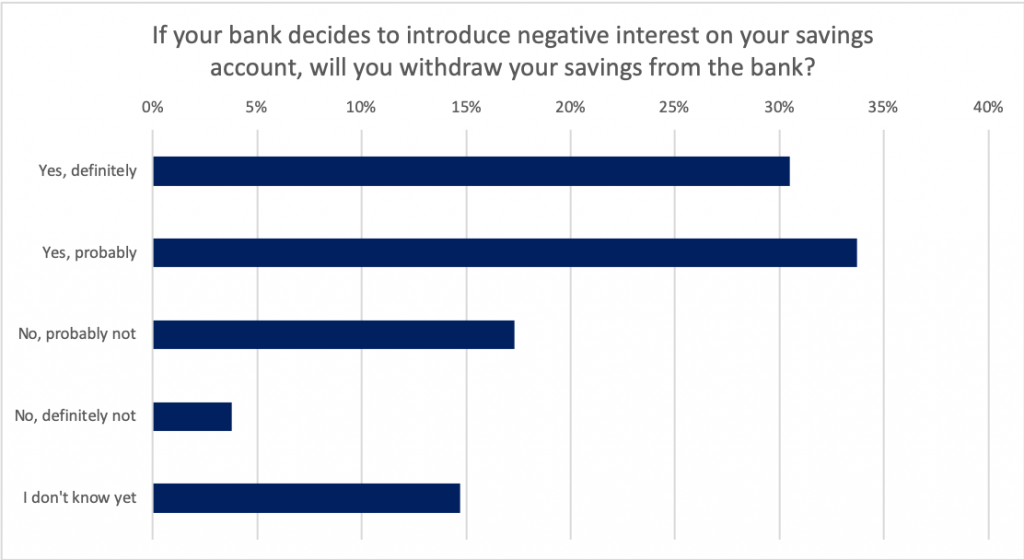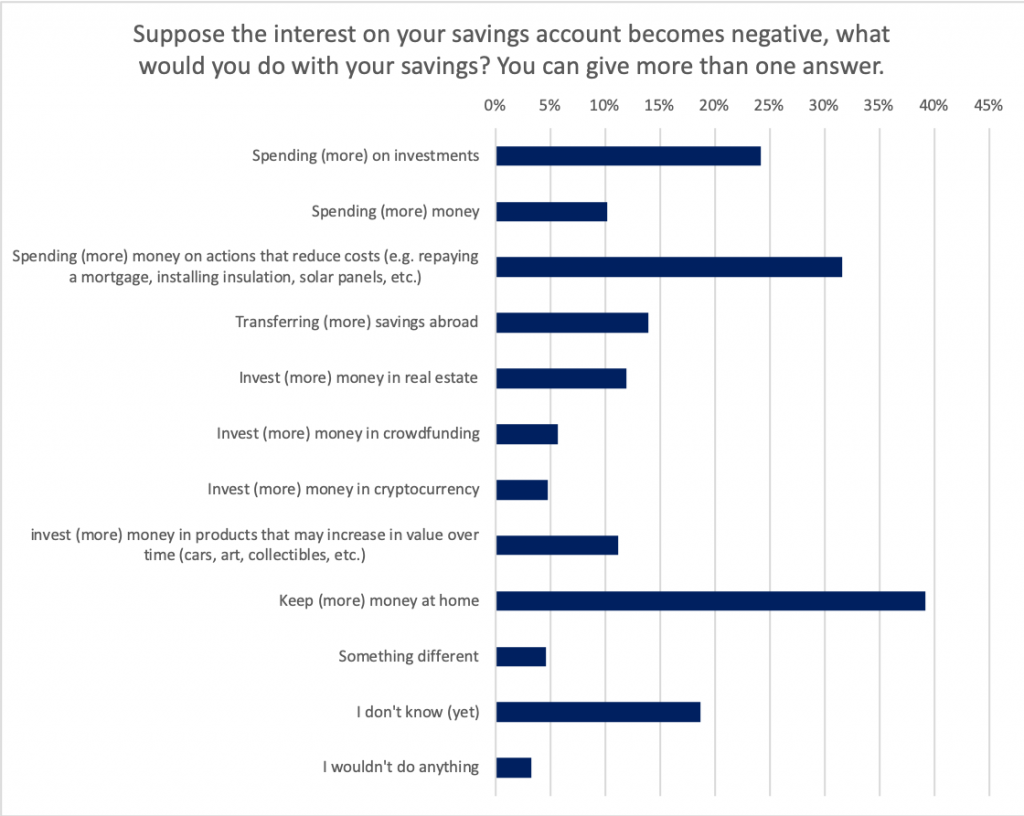The vast majority of Dutch savers, 81 percent, is very concerned about the consequences of a possible negative interest rate on their savings account. This is what can be concluded from the research that we did among 1,011 Dutch people with at least 2,500 euros in savings. From all the respondents, a staggering 64 percent said they would withdraw their savings from the bank when the bank introduces a negative interest rate.
The research shows that people with a smaller amount of savings, are more likely to withdraw their savings. For example, 71 percent of the respondents with less than ten thousand euro in their savings account said they would withdraw it from the bank when it introduces a negative interest rate. Among respondents with more than fifty thousand euro in savings, this is still 52 percent.
“These figures show the scale of the problem,” says Luuc Mannaerts, CEO of October Netherlands. “As a result, we see that no less than 87% of respondents are asking for government intervention. As a possible first step, the government can set a clear limit under which no negative interest can be charged to the consumer.”

Alternatives
When negative interest rates happen, a large part of the respondents already has a clear plan. 39 percent says that they would prefer to keep their savings at home. 32 percent says they would like to invest to reduce their monthly costs, such as paying off the mortgage, insulating the house or installing solar panels. A quarter of the respondents will invest (a larger part of) their savings in financial products, such as crowdfunding or the stock market.
Luuc Mannaerts says: “Our research shows that most Dutch savers are well aware of the possible consequences of a negative interest rate (82 percent). To prevent your savings from dissolving, it is important to know what other ways there are of achieving a return on your savings. In doing so, it is important that you are also aware of the risks.”

No choice
No less than 60% of the people questioned indicate that the only return on their savings is the interest they receive at the bank. 69% of those questioned with less than thousand euro in savings keep it in the bank. For those with more than fifty thousand euro in savings, this percentage is only 39 percent.
Luuc Mannaerts: “Most people with a relatively small savings account use their savings mainly to cover for unforeseen circumstances. Therefore, they need access to their savings at all times, so investing savings is not really an option. When discussing about government intervention, you should keep this in mind.”